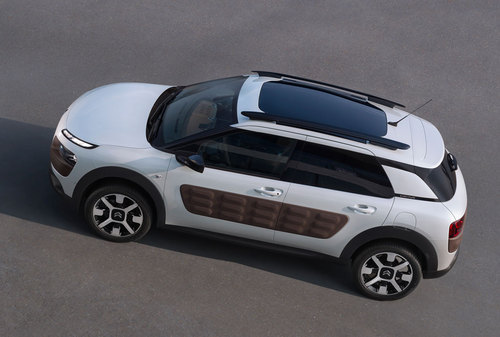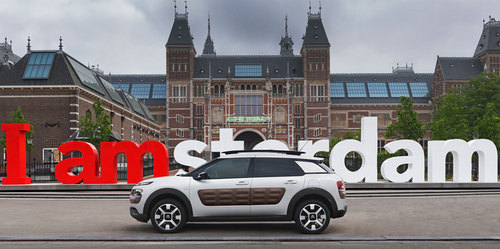Coming To America? First Drive: 67 MPG 2015 Citroën Cactus Diesel By Henny Hemmes +VIDEO
WIKIPEDIA: Groupe PSA (informally PSA; known as PSA Peugeot Citroën from 1991 to 2016) is a French multinational manufacturer of automobiles and motorcycles sold under the Peugeot, Citroën, DS Automobiles, Lotus, Proton, Opel, Vauxhall, Audi, Hindustan Motors and Ambassador[5] brands. PSA is listed on the Euronext Paris stock exchange and is again a constituent of the CAC 40 index (2015)[6] after having been removed in 2012.[7][8]
With the acquisition of GM's Opel and Vauxhall brands, Groupè PSA has officially become Europe's second largest automaker, and its sales have more than doubled with the brands aforementioned as well as PROTON Holdings, a Malaysia-based company that produces Proton and Lotus-badged vehicles, and Hindustan Motors, an India-based company whose primary vehicle was the Hindustan Ambassador, which will be leveraged to create a new brand for which PSA to sell it's cars in India for the first time in over twenty years.Beginning in 2016, PSA began to outline a strategy which entailed the rapid expansion of the company, through both geographic expansion and acquisitions of other car companies. PSA has announced plans to enter the Indian, American, Canadian, ASEAN, and other markets in the coming years.
Headquartered in the 16th arrondissement of Paris, PSA (with 3.14 million units) was in 2016 the third-largest Europe-based automaker.
See Also: PSA Peugeot Citroën Articles , News, Reviews
See Also: 2015 Citroën C4 Cactus wins Next Green Car Award for Best Crossover
First Drive: 67 MPG 2015 Citroën Cactus Diesel By Henny Hemmes +VIDEO
By Henny Hemmes
Senior European Editor
The Auto Channel
 |
AMSTERDAM - August 13, 2014: Citroën has introduced its new C4 Cactus, a small family car that is relatively cheap. The French manufacturer has saved weight by shedding excessive technology and interior trim. Our first drive will tell if going back to simplicity still can be fun.
Nearly seven years ago at the Frankfurt Auto Show, French car manufacturer Citroën presented the C-Cactus Concept, a model that was quite controversial. Many people expected it would never go into production, but during the last Geneva show, Citroën proved them wrong when they unveiled the C4 Cactus. Admitted, the production car is not as extreme as the concept. It has ‘lost’ the sloping roof line, but it is without doubt unique.
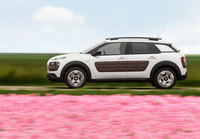 |
However, the Cactus may have the same wheel base as the C4 (2.60 m/102.3 inches), it is based on a stretched version of the old PF1-platform for small cars, which also underpins the C3 and DS3. Citroën chose not to use the EMP2 (Efficient Modular Platform) that was unveiled last year, which obviously would have been more expensive because of the use of aluminum and composite.
Watch the introduction of the 2015 Cactus at the Frankfurt Motor Show
Anyway, the C4 Cactus weighs 965 kg/2127 lbs, which means it is even 85 kg/187 lbs lighter than the C3. With a length of 4,16 m/163.8 inches, the Cactus sits right between the C3 and C4 and brings Citroën in the popular segment of the small crossover SUVs, where PSA-sister Peugeot already offers such a model with its 2008.
 |
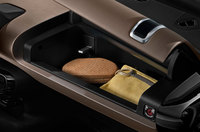 |
 |
Applying less insulation has also been a cost cutting measure. It means that it is not as quiet inside, as we are used to nowadays, but it is not annoying either.
 |
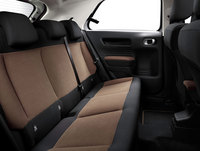 |
Like in the front, the seats cushion feels a bit weird, as if there is a bulge in the transition to the backrest. This may have to do with the use of thinner upholstery, again to save weight and cost. Another weight saver is the smaller reservoir for wiper fluid, which is possible because installs Magic Wash wipers with ‘built-in’ nozzles that spray water on the windshield if needed. It’s similar to what Mercedes introduced in 2011 as Magic Vision Control.
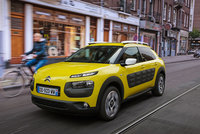 |
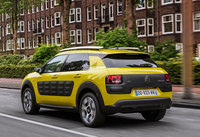 |
They are in fact pieces of rubber aircushions, like bubble wrap. Of course, they are nice styling details, but not less important, they protect the sheet metal from being dented by doors of cars next to the Cactus, which are opened too wide, or from cyclists who are getting too close. I do not know if that’s the reason Citroën chose Amsterdam for the first driving events, but it could be!
 |
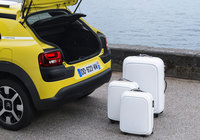 |
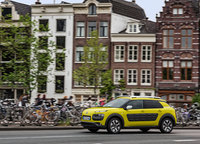 |
There is a bit of roll in the corners, but grip is pretty good. I was a bit disappointed with the 5-speed gearbox. Shifting is not very precise and because of its wide spaced gears, I had to shift more than usual when driving in a crowded city like Amsterdam. There, between all those bicycles, you have to look twice before making a right turns, to make sure no one is hiding behind the thick C-style.
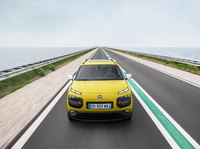 |
The diesel engine is combined with the electric 6-speed ETG transmission (Efficient Tronic Gearbox) that is at its best when shifted with the paddles on the steering wheel. Fuel consumption is even lower than that of the gasoline engine: 3.5 l/100 km (or 67 mpg) with 92 g/km CO2.
The prices of the Cactus in my country are competitive and, as I mentioned earlier, already one thousand units have been sold. Customers do not only get an extraordinary car, but also good standard equipment. The Euro NCAP crash test is due in September, but Citroen expects it to achieve a five star result.
Citroen is back on track: gone are the more or less anonymous models of a decade or so ago. The car maker has recently shown to be able to come up again with fresh styling. And with the C4 Cactus, the French prove to be able to build a fun, practical and affordable car that brings some fresh air in the highly competitive segment.



